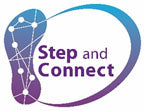
I just had an incredible session today with my client and wanted to share what I learned. She ended the session smiling, telling me she felt lighter, less fearful of moving, and fluid. This was a huge transformation considering she started the session by telling me she’s depressed and not motivated to exercise or move and fearful of falling.
I asked her, “What do you love? What makes you happy?”
Her immediate response was, “Fashion.”
So then I decided that our session would start in her closet; I told her she needs a new workout outfit. An hour later, we found ourselves in a completely different place than where we started. I would never have guessed that a new shirt and skirt could change how someone moves so much. (Please note that this may not work for all. Remember: she loves fashion and it’s important to her.)
This brings up an important discussion of really listening to our patients. I’m currently reading Alex Ferguson’s book, Leading, and in the first chapter, he discusses listening. He states, “There’s a reason that God gave us two ears, two eyes and one mouth. It’s so you can listen and watch twice as much as you talk.” I’ve been really paying attention to the cues, feedback and instructions I provide to my patients to help them move better and I think this quote explains how much we can learn from our patients by listening and watching.
After she put on her new shirt with bellowing, flowy sleeves and a beautiful skirt, she was ready … but what now? She laughed and said, “This isn’t a workout outfit!” My first instruction was then to show off the sleeves. I wanted to see her sleeves flow, swing, move and float in the air. She started to move her arms out to the side, up and down, twisting and in diagonal patterns. She started to shift her weight to move her sleeves more. Actually, she wouldn’t stop moving! Then she started to walk. She even was trying to continue to move the sleeves, which improved her arm swing that has been affected by Parkinson’s disease.
I noticed her turns were not as fluid as I wanted them to be as she took extra steps backwards. I asked her to start her turn showing off the sleeve, almost like a matador, which improved the fluidity of her turn. Then she went onto doing the twist, swinging her dress left and right, concentrating on the amount of movement in her skirt.
She laughed and told her husband, “Erica told me I can buy new exercise outfits if I keep using them to help me exercise!” For her, this was the motivation she needed; to start by wearing a new outfit that makes her feel good and then let her fashionable outfit drive her movement patterns. The visual cue (seeing the movement of the sleeves and feeling it move in different directions) helped her move bigger and more without thinking of every movement or fear of falling.
We ended with the excellent PD Warrior move called “Tah Dah” (click to read more about this exercise) to show off her outfit. (She used the sleeves on her shirt as a variation instead of the scarves.)
I didn’t have to tell her to lift her arms up as high as she could, twist or swing her arms - seeing and feeling her sleeves and skirt were her cues to move. Hearing her say, “I love fashion,” made all the difference. Listen to your patients or listen to yourself. What do you love and how can you incorporate it into your life to make you feel better and lighter?
Best,
Erica

Be the first to comment